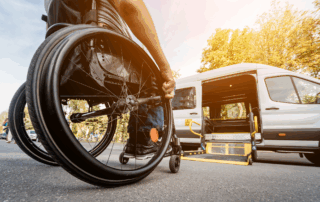Your valuables are important to you—and insuring them is equally important to prevent serious loss in the event of damage or theft. Learn more about how you can protect the finer things in life with additional coverage.
Standard homeowners, condominium or renters’ insurance policies include a limited amount of coverage for jewelry and other valuable items. However, many policies limit the dollar amount of coverage for the theft or loss due to a covered peril of such items. To properly protect certain types of valuables, additional coverage is available through a policy endorsement or floater.
Endorsements
Endorsements are additions to your homeowners, condominium or renters’ insurance policy that change or add to the policy’s provisions. The endorsement can cover property otherwise excluded from a basic homeowners insurance policy, extend the number of perils included, or increase the amount paid for a covered loss. The items of value are “scheduled” on a list that includes a brief description and the item’s dollar value.
To determine each item’s value, an appraisal or sales receipt is typically required. This will help ensure that, in the event of a covered loss, the amount of insurance is enough to cover the repair, replacement or cash payment of the item. Items scheduled are typically not subject to the policy deductible.
Floaters
A separate personal articles floater policy may be used to schedule your valuable property that is subject to special limits under basic homeowners’ coverage.
Once you have an endorsement or floater, it is important to periodically review your policy’s coverage limits to minimize the likelihood of being underinsured due to outdated appraisals and inadequate limits of insurance.
The Cost of Coverage
The cost of coverage varies upon the item, but typically the fee is nominal. Our personal lines team of professionals can provide you with more information about coverage and an estimate for the cost of scheduling an item.
Take Inventory
Review the items in the checklist below to begin taking stock of your valuables:
- Vital records and certificates (e.g., birth, marriage, divorce, adoption, child custody and death)
- Passport, driver’s license, Social Security card and other identification documents
- Property leases, deeds, mortgages, titles (e.g., auto and home) and other legal records
- Financial records, including recent tax returns, copies of pay stubs and bank account statements, and debit and credit card numbers.
- Insurance policies
- Wills, living wills and powers of attorney
- Medical records, including prescription medicines, medical conditions, medical provider contact information and copies of health insurance/Medicare/Medicaid cards
- Safe deposit box information and keys
- Records of passwords and personal identification numbers
- Family photos, keepsakes, jewelry or other mementos
- Photographic or data inventory of valuables (e.g., photos, videos, CDs and flash drives)
How to Protect Your Valuables
Once you complete your checklist, there are a number of simple no-cost or low-cost steps you can take to protect your valuables:
- Create a photographic record or inventory of your valuables and store it in a safe deposit box or other off-site location. Consider keeping a copy on a CD or flash drive in your disaster kit, so that you can provide it to your insurance company following a loss; this will allow you to kickstart the recovery process.
- Scan important records such as vital records, medical records and financial documents, and save the files on disks or flash drives. You may also want to password-protect the data you have stored in case of loss or theft. Store the backup records in a safe deposit box or other off-site location.
- If you have too many records or no way to scan/copy them, store them in a flood/fireproof home safe or a safe deposit box. Also, consider giving backup copies of important documentation to family members to store for you.
- If you have valuable items stored in a basement, move them to a higher location to avoid water damage.
- Include any readily accessible records, such as medical records and medical contact information, in your disaster kit.
- In some cases, you may be able to protect valuables in waterproof containers available in sporting goods or hardware stores. For smaller items, a flood/fireproof home safe may provide temporary protection.
- Take precautions to protect yourself from identity theft when you create backup systems to store critical information.
Before a thief steals your possessions or precious jewelry becomes lost, contact INSURICA to learn more about the affordable ways we can help you protect the things you value most.
This is not intended to be exhaustive nor should any discussion or opinions be construed as legal advice. Readers should contact legal counsel or an insurance professional for appropriate advice. © 2022 Zywave, Inc. All rights reserved.
About the Author
Share This Story
Related Blogs
2026 Open Enrollment Checklist
To prepare for open enrollment, employers that sponsor health plans should be aware of compliance changes affecting the design and administration of their plans for plan years beginning on or after Jan. 1, 2026. These changes include limits adjusted for inflation each year, such as the Affordable Care Act’s (ACA) affordability percentage and cost-sharing limits for high deductible health plans (HDHPs). Employers should review their health plan’s design to confirm that it has been updated, as necessary, for these changes.
Hot Dog Incident on Highway Emphasizes the Risks of Cargo Spills
In August 2025, a tractor-trailer owned by a third-party freight carrier was transporting thousands of pounds of frozen hot dogs when it overturned and struck another vehicle on Interstate 83 while traveling through York County, Pennsylvania, resulting in the meat products spilling across the highway. According to local authorities, the incident occurred on a weekday morning during rush-hour traffic as the tractor-trailer was nearing an exit ramp. In this moment, the driver of the truck reportedly lost control due to an undisclosed mechanical problem, causing it to tip over, hit a nearby passenger vehicle and tear open the boxes of tightly packed hot dogs in the process.
Fire and Security Safety for School Holiday Events
Fire and security safety for school holiday events should be a top priority as schools prepare for winter concerts, class parties, and seasonal performances. While these events foster community and joy, they also bring increased fire and security risks due to decorations, after-hours gatherings, and higher foot traffic







